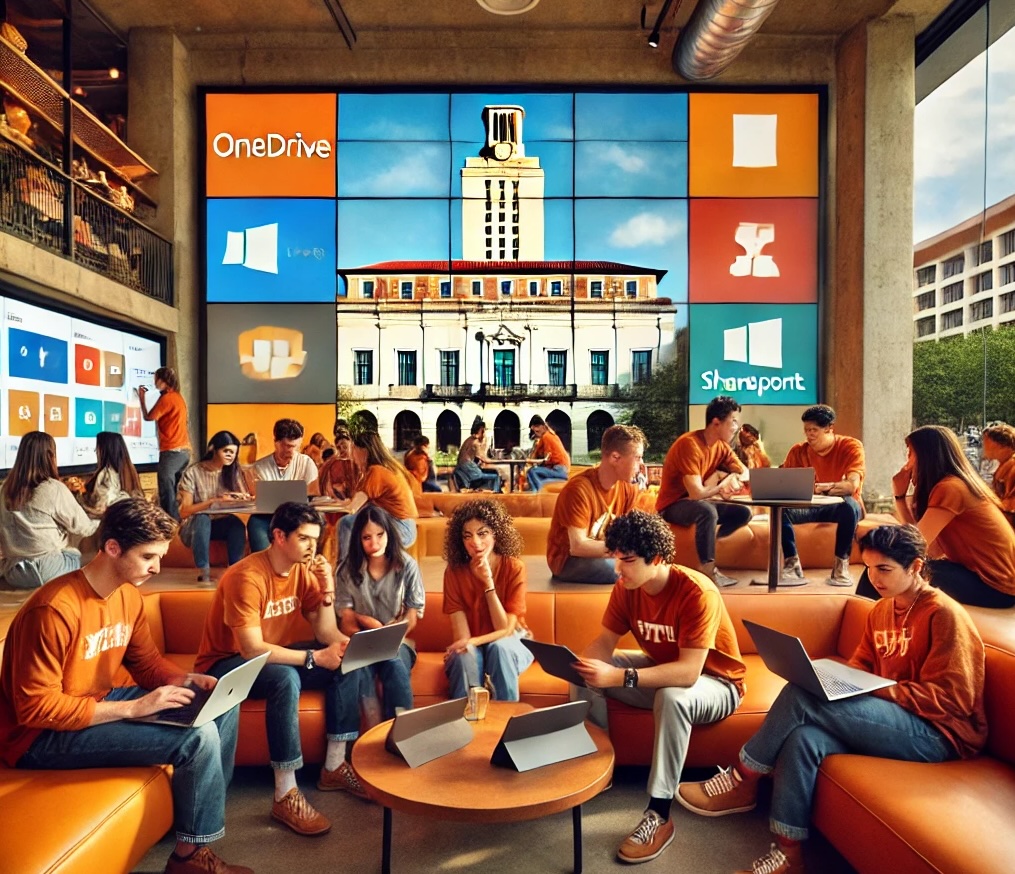As the IT leaders at UT Austin, we spend a lot of time talking about digital transformation. We encourage campus to embrace modern tools, work smarter, and take advantage of the technology investments we’ve made. But here’s the real question, are we practicing what we preach? If we want to lead the university into a more digital, connected, and efficient future, we need to start with ourselves. We need to live in the environment we’re asking others to adopt, not dismiss it, not just support it, but fully commit to it.
Right now, we’re operating in a fragmented digital world. Some teams use Slack, others use Teams. Files are scattered across OneDrive, SharePoint, Box, Wikis, and more. Some meetings are on Zoom, others on Teams. We are juggling platforms when we could be harnessing the power of our enterprise-supported ecosystem and putting Copilot to work for us.
When groups on campus reach out for help improving their digital workflows, we should be the experts they turn to. But how can we do that if we aren’t fully invested ourselves? If we don’t know Teams inside and out, how can we teach others to maximize it? If we’re not using OneDrive and SharePoint to store our work, how can we expect others to move away from Box? This isn’t just about efficiency, it’s about leadership. The best way to drive change across campus is to lean into the change. And imagine the stories we can share with the community as we do!
Here’s our challenge, we need to standardize our own workflows before we can credibly push others to do the same.
- Teams over Slack. All our internal communications should happen on Teams—chats, channels, file sharing, and collaboration. We can’t ask campus to make the switch if we haven’t fully embraced it.
- OneDrive & SharePoint over Box. Moving documents to a single, integrated storage platform makes collaboration easier and security more resilient. I am not talking about engineering new workflows that support campus operations, I am primarily concerned with our internal workflows.
- Teams Meetings over Zoom. We already have a robust, enterprise-supported meeting platform in Teams. It integrates with our calendars, our files, and our workflows. Let’s stop defaulting to Zoom when Teams can do the job. I completely understand that incoming meetings are often up to the organizer, but once we can start to show value in the automation that Copilot in Teams meetings provide, we have a reason for other groups on campus to make the change.
- Microsoft Forms over Qualtrics. I am honestly tired of responding to basic questions using our most powerful enterprise survey tool. MS Forms should be used for all lightweight data collection.
- AI & Automation with Copilot. Microsoft Copilot is already here, and it should be changing the way we work. But we won’t understand its full impact unless we actively use it. How can AI streamline our daily tasks? What reports, emails, and meetings can we automate? The only way to know is to test, learn, and apply. The SLT has decided that we are providing M365 Copilot to the entire organization.
I want to be clear, every time we use tools outside our enterprise systems, we create more work, more risk, and more fragmentation. We make it harder to secure data, harder to collaborate, and harder to support the very systems we advocate for. If we want campus to streamline their tech stack, we have to start with our own teams. That means cutting out redundant tools and fully investing in M365, not just because we’re told to, but because it makes our work more effective.
Digital transformation isn’t just about technology, it’s a cultural shift. It’s about building habits that make work easier, faster, and more connected. But culture change starts with us. I am asking us to set the example.
I want us to create a comprehensive plan for making this the new normal within Enterprise Technology. I know who some of the people are who can help lead this, but I am actively looking for people who can help and will take some responsibility in leading this.

Image created by OpenAI.